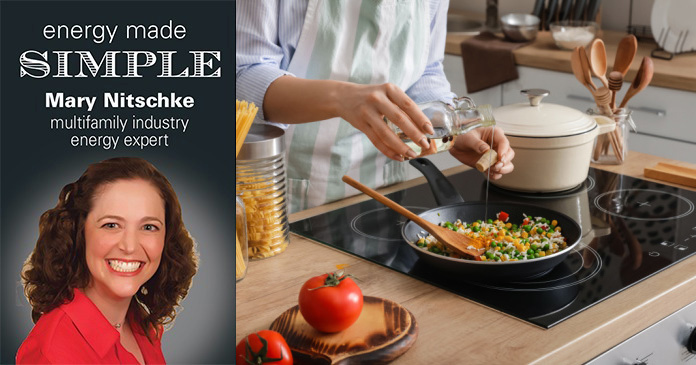
When my cousin was five, he hated peas. Passionately. I remember one family dinner at my grandmother’s house where he had consumed everything on his plate except a small pile of green peas and wanted to be excused. The great pea standoff began. After about 15 minutes of tearful fidgeting, vocalization (just sounds), and untouched peas, the leadership had to rethink its position. “You may be excused after eating one pea.” My cousin promptly accepted the terms, picked up a pea with his fingers, cleaned it with his napkin, grabbed his water glass, and swallowed it like a pill.
How my cousin felt about peas, is how many people in our industry feel about electrification. Electrification simply means building or retrofitting buildings to not have natural gas fixtures (heating systems, hot water systems and appliances for cooking) to pave the way for buildings to be powered with renewal energy. Begin vocalization here: “Residents want gas stoves and new construction needs them to attract residents.” “Heat pumps don’t work in cold climates.” “Peas are icky.” All three of these statements are false.
First, peas, when well prepared, are delightful and if you have never had risotto with fresh spring peas, I promise you it is transcendent. Let’s tackle the other two statements:
“Residents want gas stoves and new construction needs them to attract residents.” First, what residents care about has shifted. I was impressed by the 2021 NAA survey of what residents are looking for where one item of concern was how healthy the building was and how safe was the indoor air quality in the units. Residents don’t want to get sick. Shocking! When it comes to gas stoves versus electric, what we have is an opportunity to market the units differently. Gas stoves, when not properly maintained, produce carbon monoxide. If you market your new units as healthy because you have eliminated all risks of potential poisons from the units, is that not desirable? Additionally, if developers want to really get fancy, they can install convection, which Foodies are admitting are at least “as good” as gas without compromising their indoor air quality.
We also have a housing shortage in the United States, so any new construction is going to attract new residents. I once saw a Craigslist post offering to lease a crawl space in San Francisco. Do you think a prospect in that market is going to say “Gee, this unit doesn’t have a gas stove so I guess I will stay in the crawl space”?
“Heat Pumps don’t work in colder climates.” If you do not select the correct model and/or improperly install it, this is correct. However, heat pumps have been proven to work effectively in negative temperatures. Saying they don’t work in colder climates is a lot like installing a bathtub in the kitchen and exclaiming that it isn’t roasting the chicken properly. You must have the right appliance installed correctly to achieve your goal. Also, if in-unit gas furnaces are not properly vented, oversized, or in need of maintenance or repair, you are back to the same carbon monoxide issue as with gas stoves.
At the 2023 United Nations Climate Conference, 200 countries committed to moving away from fossil fuels (including natural gas) by 2050. Although this seems like a long time from now, it will impact our building codes for new construction and renovation as localities move us away from nonrenewable energy sources. This means you are going to see more about electrification. We are going to have to embrace peas as the noble starchy vegetable they are.














